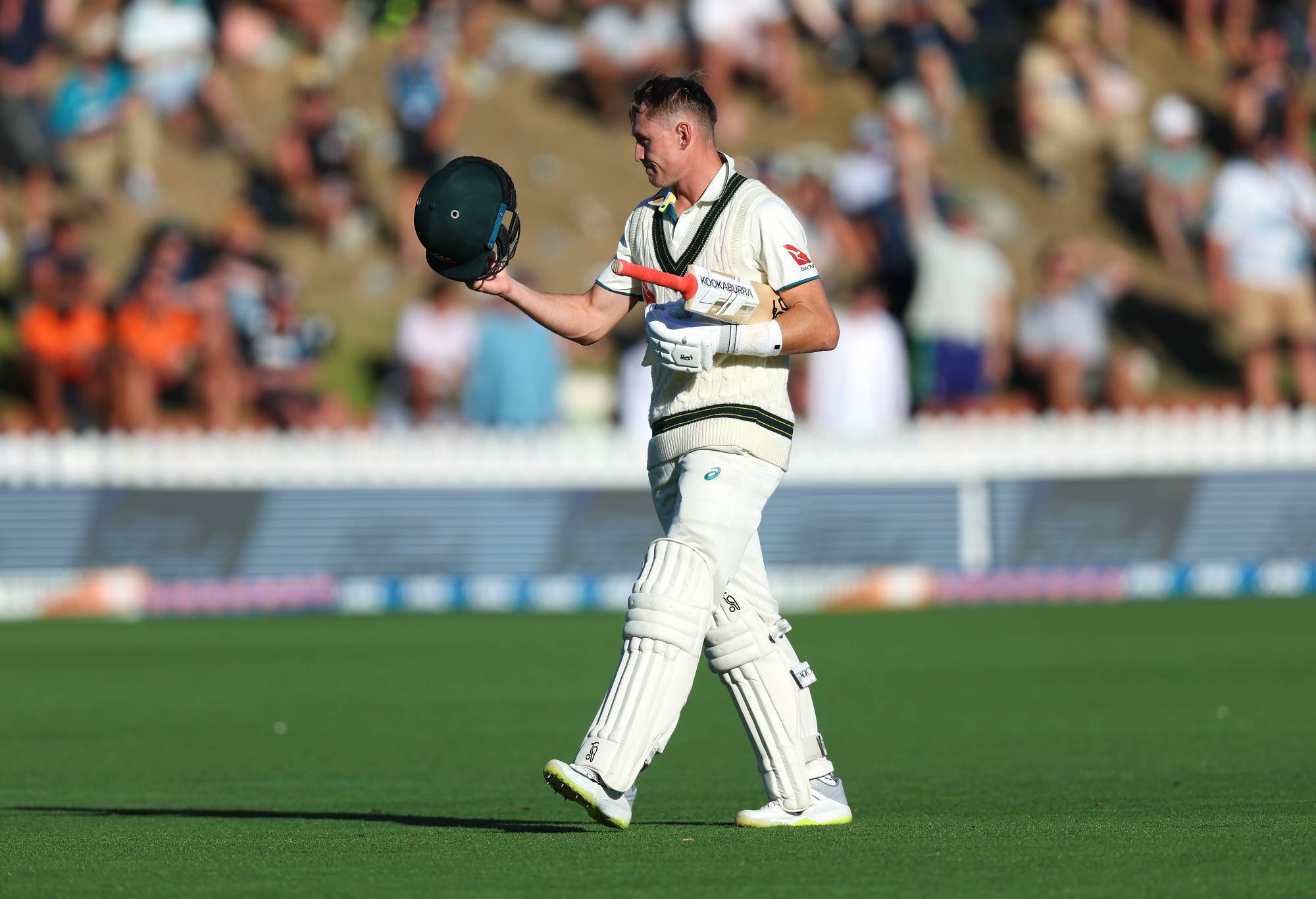Everyone is assuming that Steve Smith moving back down the order will mean he returns to the run machine of years gone by.
But that is no longer the guarantee it once was.
Even though sanity has prevailed and Smith is returning to his favourite No.4 slot in the Australian Test team, recent form and the fact that he is on the wrong side of 35 suggests he is no longer the bankable anchor who can hold the team’s innings together if early wickets tumble.
Whether it was his idea, coach Andrew McDonald’s or the selection panel finally making a tough decision, Smith’s return to the middle-order makes sense.
But what if he continues to struggle?
In his past 21 innings, Smith has made it past 50 on only three occasions.
Going back to the start of the tour to India last year, he is averaging a modest 36.14 with just two tons in 17 Tests – in the World Test Championship final against the same opponent and the second Ashes Test at Lord’s.
It is not what most Test batters would call a form slump but it shows that he has not been the reliable rock of previous years.
In the 92 Tests beforehand, he had one of the greatest averages of all time at 60.89 with a success rate of a century every third match.
Smith spent several years as either the undoubted best or one of the top three Test batters in world cricket.
England rival Joe Root is the runaway leader now at the top of the rankings, New Zealand’s Kane Williamson has managed to maintain a seat at the big dogs’ table but Smith and Indian contemporary Virat Kohli have fallen away.
Indian opener Yashasvi Jaiswal, with his 60-plus average after 12 Tests, and England strokemaker Harry Brook have usurped Smith and Kohli.

Steve Smith. (Photo by Bradley Kanaris/Getty Images)
For the first time in a long time, Australia don’t have a batter who you could argue is one of the best two or three in the world.
When Australian cricket rules the world, it is usually on the back of a standout performer with the bat – Smith continued on from Michael Clarke, Ricky Ponting, Steve Waugh, Mark Taylor, Allan Border, Greg Chappell and so on as the mainstay of the line-up who stood tall on the global pecking order.
Usman Khawaja has tailed off after his prolific revival a couple of years ago, Marnus Labuschagne has notched just one century in his past 20 Tests and Travis Head is feast or famine, with the latter becoming more frequent in the past year.
Cameron Green was finally finding his feet at Test level but he’s now out until midway through next year, Mitchell Marsh has cemented his role at No.6 but is never going to be a consistent run machine and whoever is chosen to replace David Warner as a long-term opener will be under pressure from ball one to show they are up to the task.
Warner sticking his head up to say he would be ready to answer the non-existent call from the selectors to open against India proves nothing apart from the fact that he is clearly suffering from a lack of attention at the moment to go with his ongoing deficiency when it comes to self-awareness.
He was extremely lucky that Australia’s gun-shy national selectors did not have to cojones to drop him a year or two before he bowed out of the Test arena in January due to his exceedingly average form.
But the Warner circus is merely a sideshow to the main act that is the Border-Gavaskar Trophy showdown with India which gets underway in Perth four weeks from now.
The luxury of having all players available, not quite but almost, for the first two Sheffield Shield rounds was supposed to give the Australian selectors plenty of time and many an option to fill the sixth spot in the line-up now that Green’s stress fractures have sent him to the sidelines for at least six months.
But there are now more questions than answers with none of the candidates mounting an irresistible case for selection.
And with Smith, Labuschagne, Pat Cummins, Josh Hazlewood and Mitchell Starc involved in the near pointless three-game ODI series against Pakistan early next month, they will not get the chance to fine-tune their red-ball skills in the third round of the Shield.

Marnus Labuschagne. (Photo by Hagen Hopkins/Getty Images)
If the selectors had been more proactive in bringing down the curtain on Warner’s prolonged farewell tour, they could have been in a much better position.
Cameron Bancroft, Matt Renshaw or Marcus Harris may have been able to establish themselves in the line-up. Or at the very least they would have already had what would likely be their last chance to cement a spot.
By safeguarding the present and ignoring the future, the selectors have been delaying the day of reckoning for series after series.
Labuschagne could very well be the youngest player at 30 in the team that Australia roll out for the first Test.
Because of his greatness over many years, Smith deserves to play well into his late 30s like Border, Waugh and Matthew Hayden before him, if he can return to form resembling his former glory.
But with question marks all over the batting line-up, Australia are on the verge of a tricky 15-month period with heavyweight clashes against India and England either side of a World Test Championship final, if they qualify, which is not certain with Sri Lanka nipping at their heels after three straight wins.
>Cricket News

%20(3).jpeg)




0 Comments